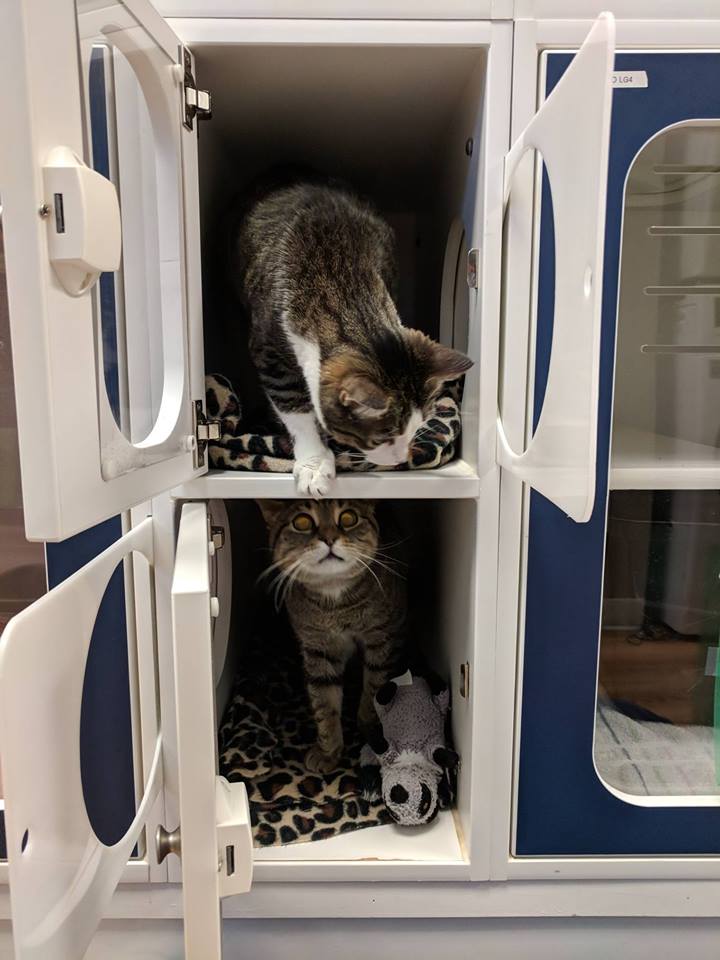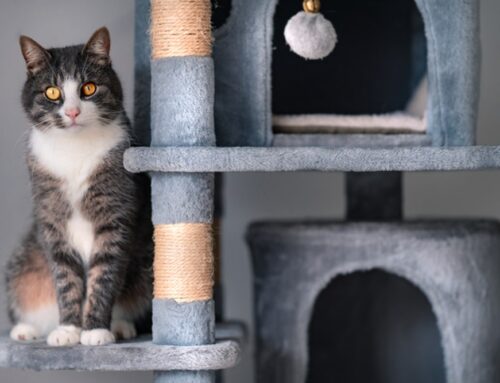It’s no secret that home renovations and projects can be stressful for everyone involved, but there’s a way to keep your pets safe and keep your own sanity during the process.
Determine the scope of the project in terms of length to completion and space needed.
Knowing this up front, and probably best to add a few days at least onto the estimated time frame, will help you adjust things for your cat and hopefully avoid stress behaviors. Space is important because it will determine if your cat can stay at home while renovations are ongoing. Is it just in the kitchen? Can that area be blocked off? Is it a bathroom upstairs only? Is it the whole house? In cases where it’s only part of the house, attempt to block off that area to your cat. This way they still have the illusion of the run of the house, but without the risk of being let out or getting hurt. In cases where it’s most of the house that will be under construction, it might be best to arrange for daycare or boarding depending on the time frame.

Recognize what your cat’s stress factors are.
Does your cat enjoy meeting new people or do they hide? Do they spook at loud noises? No matter the project, it’s likely to be loud and involve several people that your cat is not used to. If possible, set up an area as far away in your home as possible from the project – think a bedroom, large bathroom, etc. – to help minimize how much they hear or see. However, some cats become more stressed when they are isolated in the house or stuck in a bedroom so make sure you determine what will benefit your cat the most.

Set your cat up for success and keep them safe.
If you opt to set your cat up in a bedroom or bathroom, make sure to make it a safe and comfortable space that meets their needs. Include a litter box, comfy bedding, a toy, a hiding place, a place that’s high up and not the floor, a Feliway diffuser, water, and food (if at mealtime). It’s important to include a hiding place so if they are scared by a noise, they have space to feel secure. Some cats prefer to go high up when they get nervous so offering them a piece of furniture or shelf – even a cleaned off sink counter top in a bathroom can help.
To create a hiding place, you can nook bedding behind furniture, get a covered cat bed, or create your own. My favorite is to take a kitchen or 4 legged desk chair and place bedding underneath it. Then drape a light weight blanket over top to create a tent. Another option that’s easy and effective is a cardboard box! We all know kitties love boxes, but they can actually help reduce stress. Whatever method you use, make sure to spray bedding with Feliway spray and put a treat or two down for a surprise.

Know the risks.
The scariest part of having your cat at home while a project is going on is the risk of them escaping. If you have an indoor only cat, they may dart out an open door and be too scared to come back because of the strangers and noise.
Always opt for the safest solution even if it won’t make your cat the happiest. For example, if you’re having hardwood floors put in your whole house, day care may be the safest and best option for your cat even if they are a little stressed at the boarding facility.

For cats that are going to stay at home, watch out for signs of stress including gastrointestinal upset, inappropriate urination or bowel movements, hiding even after the workers have gone, not eating, and even aggression. If you suspect any of these symptoms, contact your vet.
If you have an upcoming project and want to learn more about safe and de-stressing options for your cat, contact Just Cats Clinic.













